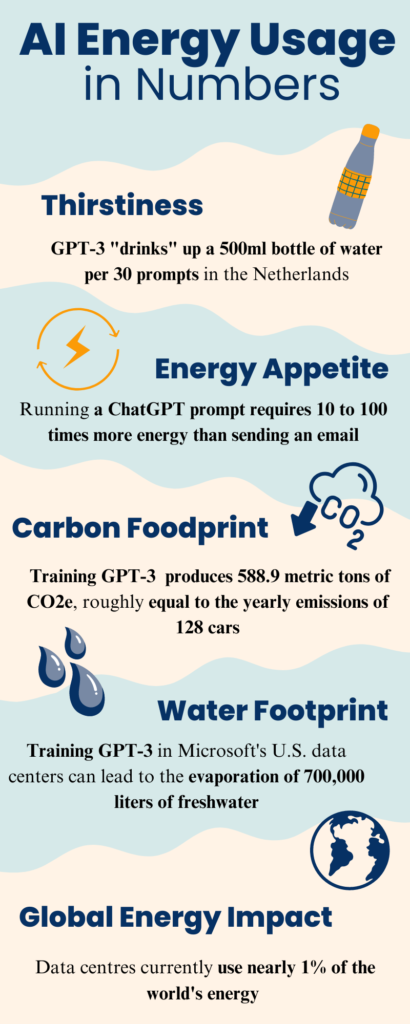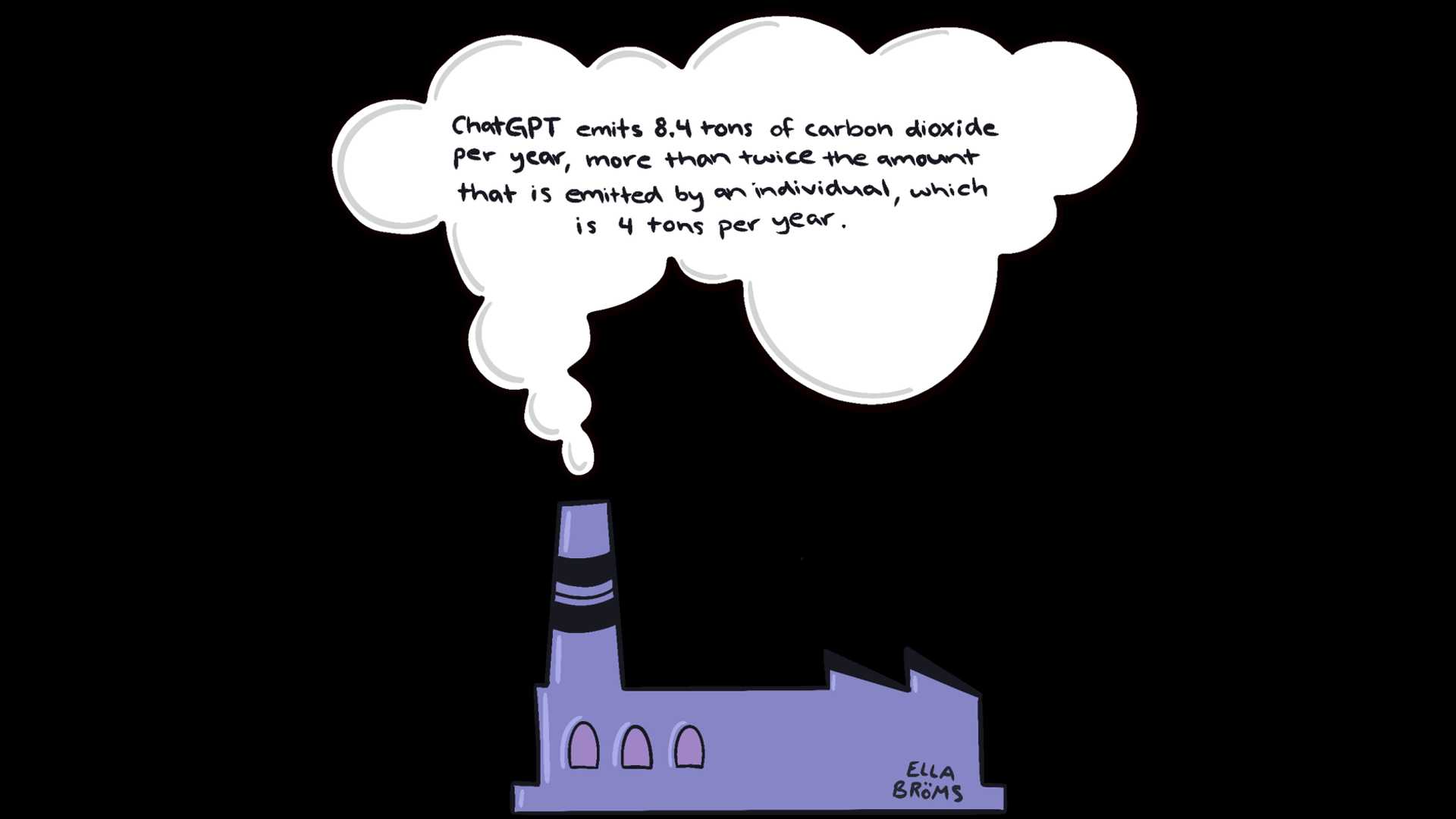Uncovering the hidden cost of ChatGPT – Talon
The AI Gold Rush we are experiencing right now is, to put it plainly, revolutionary. We no longer need to spend what limited time we have with time-consuming activities. Need to write an email? Brainstorm ideas for a project? Generate study guide questions? ChatGPT can get it done in less than 5 seconds. In this sense, generative AI feels like a fantastical dream. However, this incredible convenience is not free – the environment pays the price.

According to Earth.org, ChatGPT emits 8.4 billion tons of CO2 into the atmosphere per year, double the amount that is emitted by an individual. Beyond just CO2 emissions, for every 20 to 50 question conversation, a full water bottle is used. Data centers–buildings storing computers including their servers, storage drives and network equipment–are required for almost any legal entity like government agencies or business, like the Department of Commerce or Amazon. However what makes the use of AI unique is its demand for excessive energy. For example, Amazon has more than 100 data centers scattered across the world, but an AI model would require seven or eight times more energy. It has been estimated that, for each kilowatt hour of energy a data center consumes, it would need two liters [4 bottles] of water for cooling,— Noman Bashmir said to MIT News. The amount of water required to keep the AI models working “can strain municipal water supplies and disrupt local ecosystems,” Staff Writer of MIT News Adam Zewe wrote. “The increasing number of generative AI applications has also spurred demand for high-performance computing hardware, adding indirect environmental impacts from its manufacture and transport.”

The energy usage depends on how many specific questions the users pose. In fact, on April 21, 2025, Sam Altman, the founder of ChatGPT, posted on X responding to users about the electricity costs of the AI showing good manners. “Tens of millions of dollars well spent–you never know,” was the CEO’s response, referring to the idea that we must be polite to AI in case robots may one day take over the world. When we go beyond ChatGPT’s controversy on copyright infringement, security issues and impact on adolescent brain development, its staggering impact on the environment raises ethical questions about its consumption. This leaves us pondering, if more people were aware of the environmental strain AI is causing, would this reduce their usage?
Survey Results from Oak Park High School
According to Pew Research Center, at the beginning of 2025, the number of teens who use ChatGPT for school work has risen 26% from two years ago. In comparison to OPHS students, of the people who use ChatGPT, 34.5% of OPHS students use the model for homework help, 35.8% for studying help, 13.9% for writing assistance and 26.8% for brainstorming art.

Our first step towards a sustainable future doesn’t have to be working against AI, but in a way where AI, the environment and human creativity can flourish. We naturally shy away from changes that disrupt the comfortable lifestyle we create for ourselves. So, will you actually make the change? Or will you continue to take the easy way out?




















